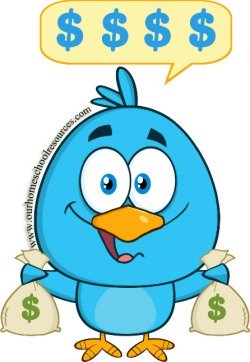How to Teach Personal Finance to Young Kids
When you learn how to teach personal finance to young kids, you can set them up for a lifetime of sound money management.

10 creative and age-appropriate ideas on how to teach personal finance to kids aged 5-7:
The Saving Jar: Provide kids with three jars labelled "Save", "Spend", and "Share". They can decide how they want to allocate money whenever they receive it. This introduces them to the basics of budgeting, saving, and philanthropy.
Play Store: Set up a mini "store" at home with price tags on items. Give your kids play money to spend. They will practice the act of purchasing and will begin to understand the concept of items having value.
Storybooks about Money: There are several children's books that revolve around money, saving, spending, and making decisions. Examples include "Alexander, Who Used to Be Rich Last Sunday" and "A Chair for My Mother".
Coin Identification & Value: Teach kids to recognize different coins and their values. You can play matching games or set up a mini bank where they deposit and withdraw cash.
Lemonade Stand: Allow them to set up a lemonade stand or a similar mini-business. They'll learn about earning, spending on ingredients, and saving profits.
Board Games: Games like "Monopoly Junior" can introduce kids to the concepts of earning money, paying bills, and making financial decisions in a fun and engaging way.
Needs vs. Wants: Use real-life scenarios or picture cards to help kids distinguish between things they need (like food and clothing) and things they want (toys, candy). Discuss why we sometimes have to prioritize needs over wants.
Chore Chart with Allowance: Implement a system where they can earn money by completing specific tasks. This will teach them about the value of work and earning

Field Trip to a Bank: Arrange a short trip to your local bank. Some banks offer tours or sessions for kids where they can learn about how banks work, the concept of saving, and even see the vault!
Interactive Apps: Several apps are designed to teach kids about money. These apps often use games and interactive scenarios to teach financial basics.
Keep in mind that as you learn how to teach personal finance to young kids remember that the key at this age is to lay a foundational understanding and foster a positive relationship with money. Make sure to make the activities fun and engaging.


Some other Homeschooling Topics of Interest:
Piano
lessons for kids were one of the first things I searched for when I
started homeschooling my children. I wanted it to be part of their
homeschool art curriculum. I wanted them to learn piano because I've
learned before that children who learn to play a musical instrument do
much ... <click here to read more>
Let Teens Learn How to do Woodworking
I've been thinking about how kids spend so much time glued to their screens nowadays. Don't get me wrong, technology's great, but sometimes I wish they'd get a break and try something hands-on. Something real. That's why letting teenagers learn how to do woodworking is good... <click here to read more>
Lots of parents want handwriting improvement for their children. A lot of them are concerned with bad handwriting. I was one of them with the writing of my kids that looked like chicken scratch, so I understand the struggle. I also had terrible handwriting when I was a child...<click here to read more>
Home School for High School? Can it be done? Of course! If you're thinking about homeschooling during the high school years, you're not alone. I was in the same shoes about 8 years ago. It's a big decision, but it can be an exciting adventure! Let's get into the good stuff about homeschooling... <click here to read more>



